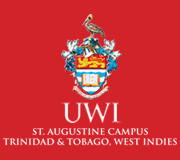Brasso Seco Embraces Cocoa Conservation
Nestled between mountains in the Northern Range, Brasso Seco is a hidden treasure - a tranquil village home to a population of 350. An idyllic church and a community centre and a boutique or two form the village centre, set against the backdrop of a picturesque green, luscious mountain.
Cuddled tightly around this centre are speckles of wooden homes that blend into the surrounding green cocoa and coffee estates. Brasso Seco is accessible only through a long narrow winding picturesque northern route to Blanchisseuse hugging the mountains and is only an hour and a bit away from the city of Arima by car.
Entering the village one is greeted by the chirping of the birds, rippling sound of a nearby stream tumbling and rolling along the hill side, and of course the playful mountain crabs crisscrossing the winding road, reminding you of what is to come.
The livelihoods of it people are simple, centered around agriculture but with a bit of tourism which brings visitors. Once a bustling cocoa producing region, it is now only a shadow of its history.
Much of the cocoa estates remain abandoned, often taken over by the forests. The present day gardens are mixed with a bit of cocoa, coffee, banana, coconut, citrus, yams, cassava and vegetables. Brasso Seco with its rich soil and abundant rainfall boasts of setting the record for the largest cassava tuber and the largest bunch of 'fig' and many more. The framed testimonials of those records hang proudly on the walls of Mr. Selina, a long time resident of the village.
With the arrival of electricity and telephone to the village only a decade or so ago, the tourism has picked up. There are guest houses which can accommodate a small number of visitors at a time. Brasso Seco is home to some of the most delightful and energizing hiking tracks to Madamas and the Paria Falls as well as visits to the traditionally styled cocoa and coffee estates. The trails can also take you over the mountains to the exclusive Paria Beach, accessible only by hiking or by boat.
On the evening of the 30th March, 2012 there was buzzing of activity around the community centre, and much anticipation in the air. It was a time for the community to gather and discuss issues that affect livelihoods in the village. Thanks to electricity, which arrived only a decade ago to the village, the meetings can start later in the evening and go into the early night. It was a hastily arranged meeting to greet the crew from CRC (Cocoa Research Centre, UWI) and learn about what opportunities the meeting would bring.
Cocoa farmers in the community were invited by CRC to house within their idyllic estates a small collection of the cocoa types from Trinidad and Tobago’s global repository of cocoa types. This internationally renowned repository, managed by CRC, consists of over 2400 varieties of cocoa in an estate in La Reunion. It was a proposal to partner with the Brasso community (and any other like minded community around Trinidad and Tobago) to protect a bit of heritage for posterity as a safeguard against calamities that can affect the present collection housed in a single location. On the flip side the community will have the opportunity to house a piece of the country’s heritage, evaluate cocoa types within its’ environment for adaptability and use them in developing flavor profile that is uniquely ‘Brasso’. The CRC would partner with them through provision of free planting material and technical know-how. There was considerable excitement in bringing new cocoa types to the village they fondly call Brasso.







